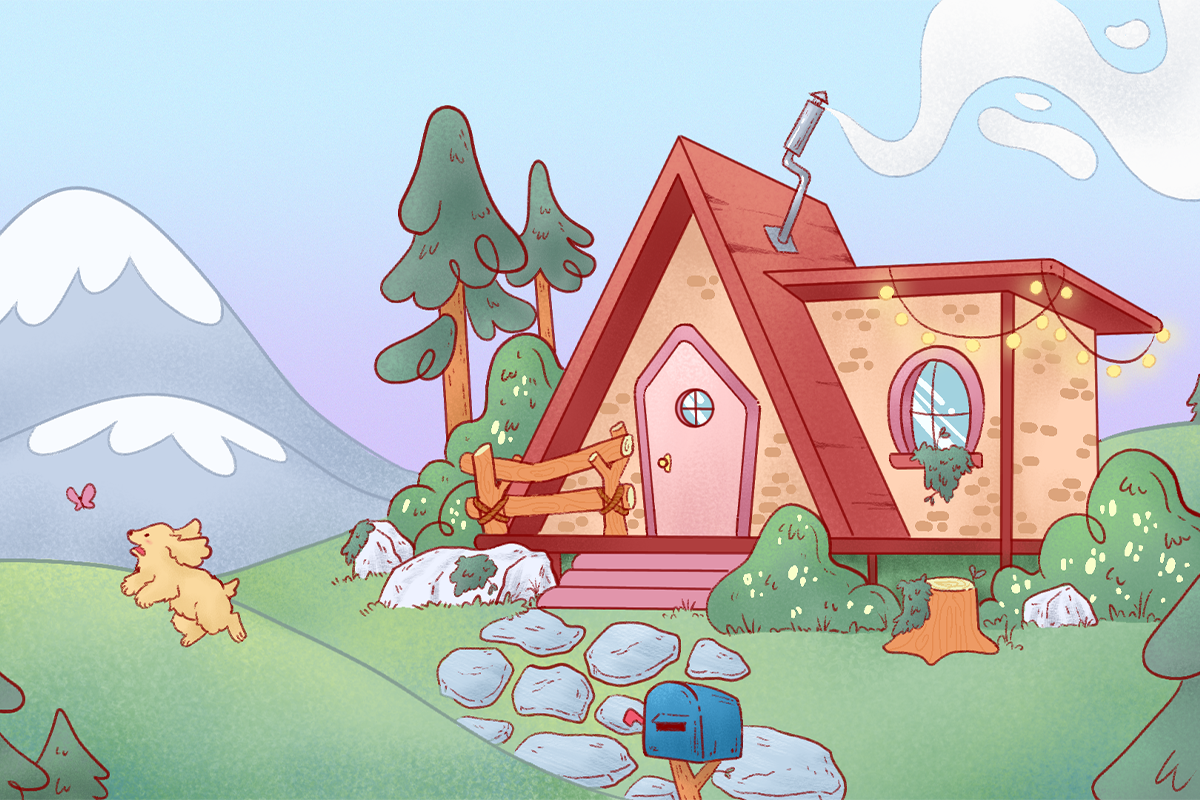An Interview With Third Winner Of Marsception 2024 Architecture Competition - Alp Arda
Winners Interviews
16 Aug 2024
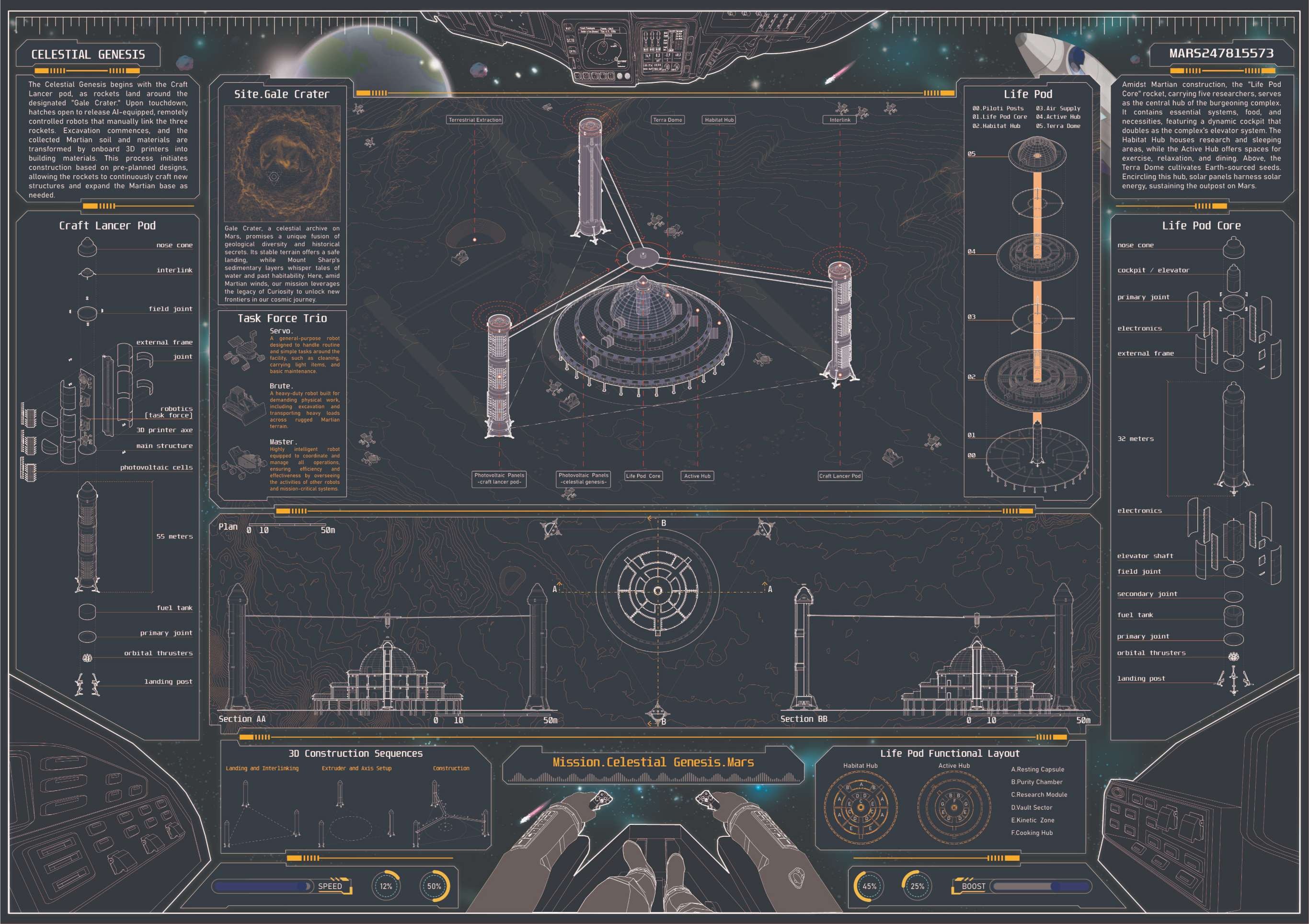
We would like to take this opportunity to introduce you with Alp Arda, from Italy - The Third Winner Of Marsception 2024 Architecture Competition. Alp Arda, an architect and urban dreamer dedicated to sustainability and speculative design. Educated at Politecnico di Torino, with a focus on innovative conservation strategies and the transformative role of technology in urban development.
Come and take a look at what the Third Winner Of Marsception 2024 Architecture Competition - "Alp Arda" with his proposal "Celestial Genesis" has to say about his experience and journey throughout the competition. For the purpose of this interview he would be referred as AA to responses, however Volume Zero referred as VZ.
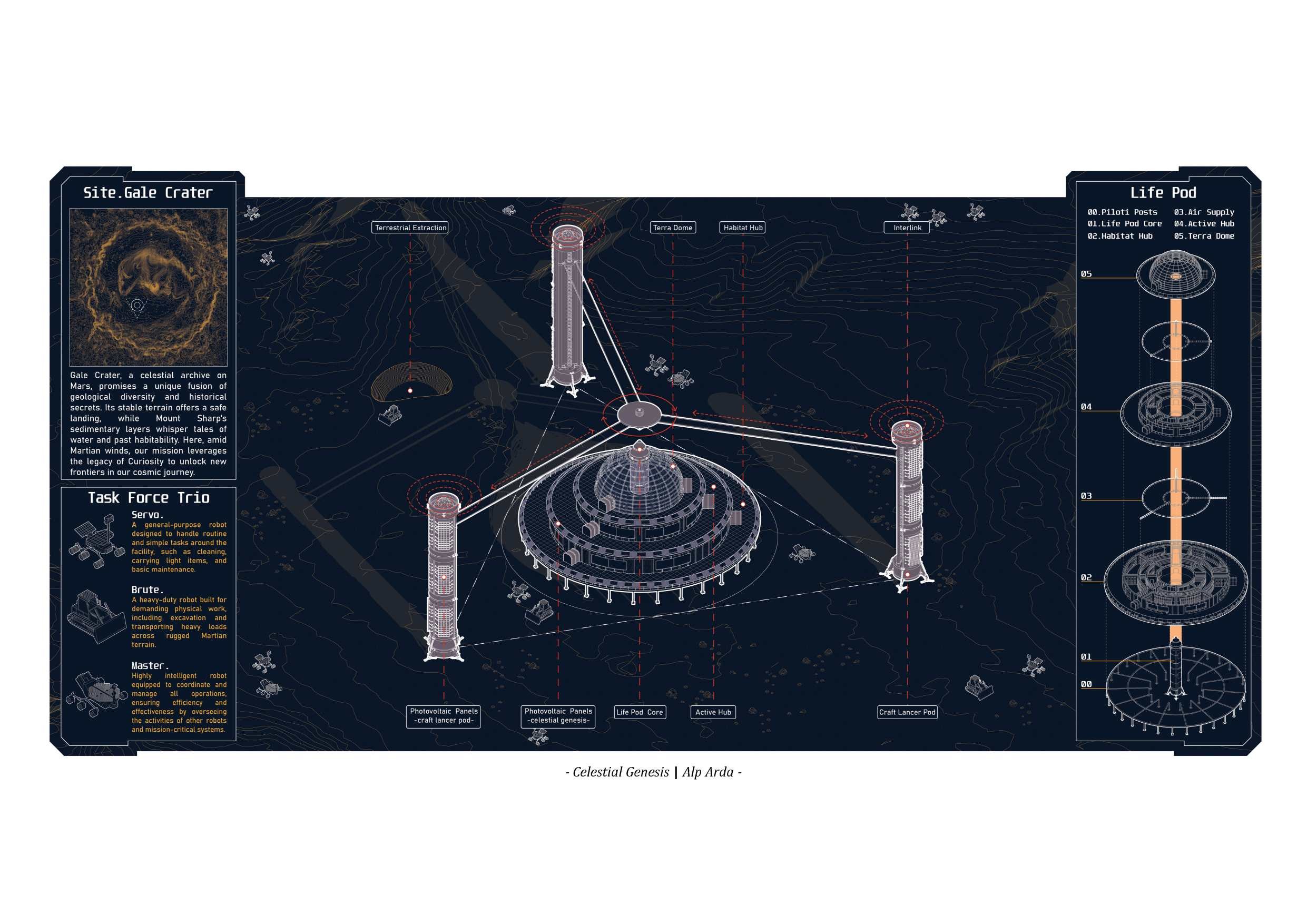
VZ- How would you introduce yourself / Team /Firm?
AA- Alp Arda, an architect and urban dreamer dedicated to sustainability and speculative design. Educated at Politecnico di Torino, with a focus on innovative conservation strategies and the transformative role of technology in urban development. Actively participating in academic forums and discussions, integrating interdisciplinary approaches to reimagine urban spaces and drive positive change in the built environment.
VZ- Give us brief information of your previous projects/ works/ research/achievements?
AA- Alp Arda has contributed to diverse projects at Balance Architettura, including Superlab Bicocca and the Cavallerizza Reale di Torino competition. Collaborations with China Room and Turin Design Hub led to notable projects like Jianhu Revival. In 2023, Alp was part of the graphical editing team for "The Great Game Detroit" and participated in the "Industrial Remix - Workshop" with MIT.
Alp received an honorable mention in the YAC - Detroit Waterfront District competition, an honorable mention in the Villa on the Moon by Non-A competition, and many other competitions. A presentation on "Innovative Conservation Strategies" at a 2024 conference and involvement in the TrUST podcast highlight Alp's focus on sustainability and technological innovation in urban development.
VZ- What unique design approach did you take that you believe contributed to your success in the competition?
AA- As a belief in innovation and efficiency drove the design approach, the success in the competition can be largely attributed to the use of 3D printing technology and a well-planned, research-driven settlement structure. The 3D printing system transformed Martian soil into building materials, allowing for the continuous construction of the base. This technology enabled the creation of essential structures quickly and efficiently, based on pre-planned designs.
The central hub, the Life Pod Core, was equipped with essential systems and featured functional zones for living and research. Surrounding facilities provided spaces for relaxation and food cultivation, while solar panels ensured a sustainable energy supply. This combination of advanced 3D printing technology and a comprehensive, self-sustaining, research-driven settlement design was key to the project's success.
VZ- What advice would you give to individuals who struggle to decide whether it would be beneficial for them to participate in architecture vision competitions?
AA- Participating in architecture competitions always offers a unique experience and perspective to the creator. There is no limit to what you can learn during the process; the only limit is your imagination. One of the most enjoyable aspects of these competitions is the challenge they present to your creativity. Throughout the process, you position yourself both as a creator and a critic, requiring you to evaluate your own project critically. This self-assessment skill is invaluable and contributes significantly to personal growth.
Additionally, competitions provide exposure and recognition, as well as opportunities for networking within the architecture community. Projects developed for these competitions can enhance your portfolio, showcasing your ability to tackle unique challenges and innovate. Finally, the process itself can be a lot of fun, allowing you to enjoy the challenge, play with new
concepts, and push your boundaries in a competitive yet creative environment. Considering these points, participating in architecture vision competitions can be highly beneficial, offering both professional and personal growth.
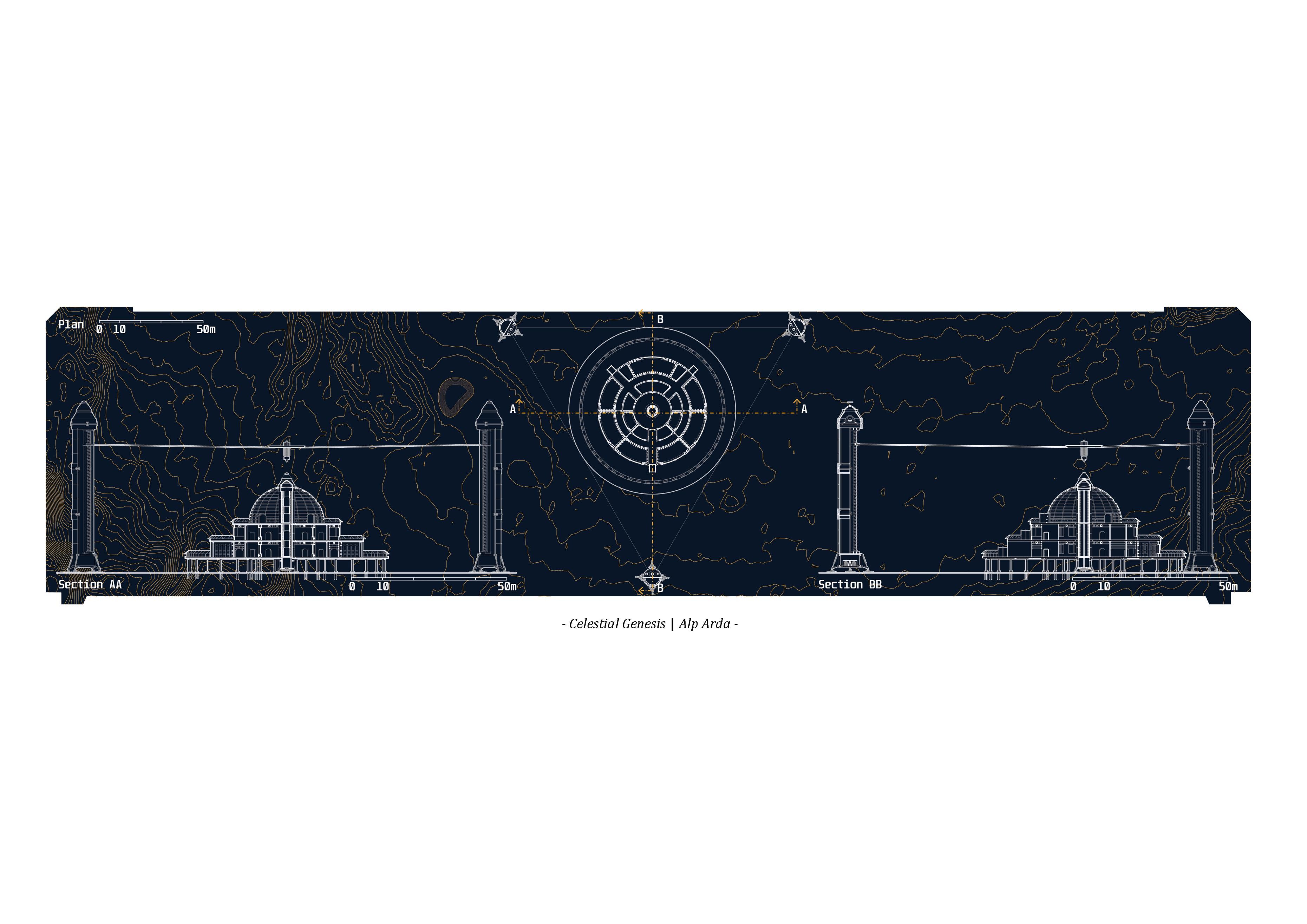
VZ- Can you walk us through your design journey for this competition?
AA- The design journey for this competition began with inspiration from the video game "Starfield" by Bethesda. As someone who enjoys video games, I started the design process by immersing myself in the game's environment, imagining myself being sent to Mars, much like the competition's description suggested. This imaginative exercise allowed me to envision the experience of being an astronaut on Mars, kickstarting my creative process.
To fully embrace this vision, I used the game's setting to mentally transport myself to Mars, sparking the imagination necessary for the design. Having a strong personal and academic interest in 3D printing over the years, I combined these two passions to create a cohesive design. This blend of my hobbies and expertise in 3D printing led to the development of a unique and innovative solution for the competition.
VZ- What were the challenges you faced while designing for such an architectural space?
AA- To be honest, I didn't face significant challenges during the design process. I've had a long-standing fascination with space, and over the years, I've spent a lot of time reading various books, articles, and watching films about space and life beyond Earth. This continuous learning has provided me with a wealth of knowledge and details about space and space living, which greatly facilitated the design process. My passion and background in this subject area allowed me to approach the project with confidence and a deep understanding of the unique considerations required for designing an architectural space on Mars.
VZ- What was your thought process while designing for The Marsception Architecture Competition 2024?
AA- The primary challenge in my thought process was deciding on the site for the project. Given the vastness of Mars, determining the ideal location required careful consideration. Mars is a planet with diverse geological features, each offering unique advantages and challenges for construction and sustainability. I chose Gale Crater for several reasons. First, its stable terrain ensures a safer landing and construction process. The geological richness of the site, particularly the sedimentary layers of Mount Sharp, provides valuable insights into Mars' history of water and potential habitability. This choice not only aligned with the competition's goals but also leveraged existing research from missions like the Curiosity rover.
VZ- What attracted you to this competition?
AA- The Marsception Architecture Competition 2024 attracted me due to my long-standing fascination with space exploration and the challenge of designing sustainable living environments on Mars. It was an exciting opportunity to combine my passion for space with my expertise in advanced technology and 3D printing. The competition encouraged creative thinking and innovative solutions, allowing me to push the boundaries of traditional architecture and contribute to the future of space exploration.
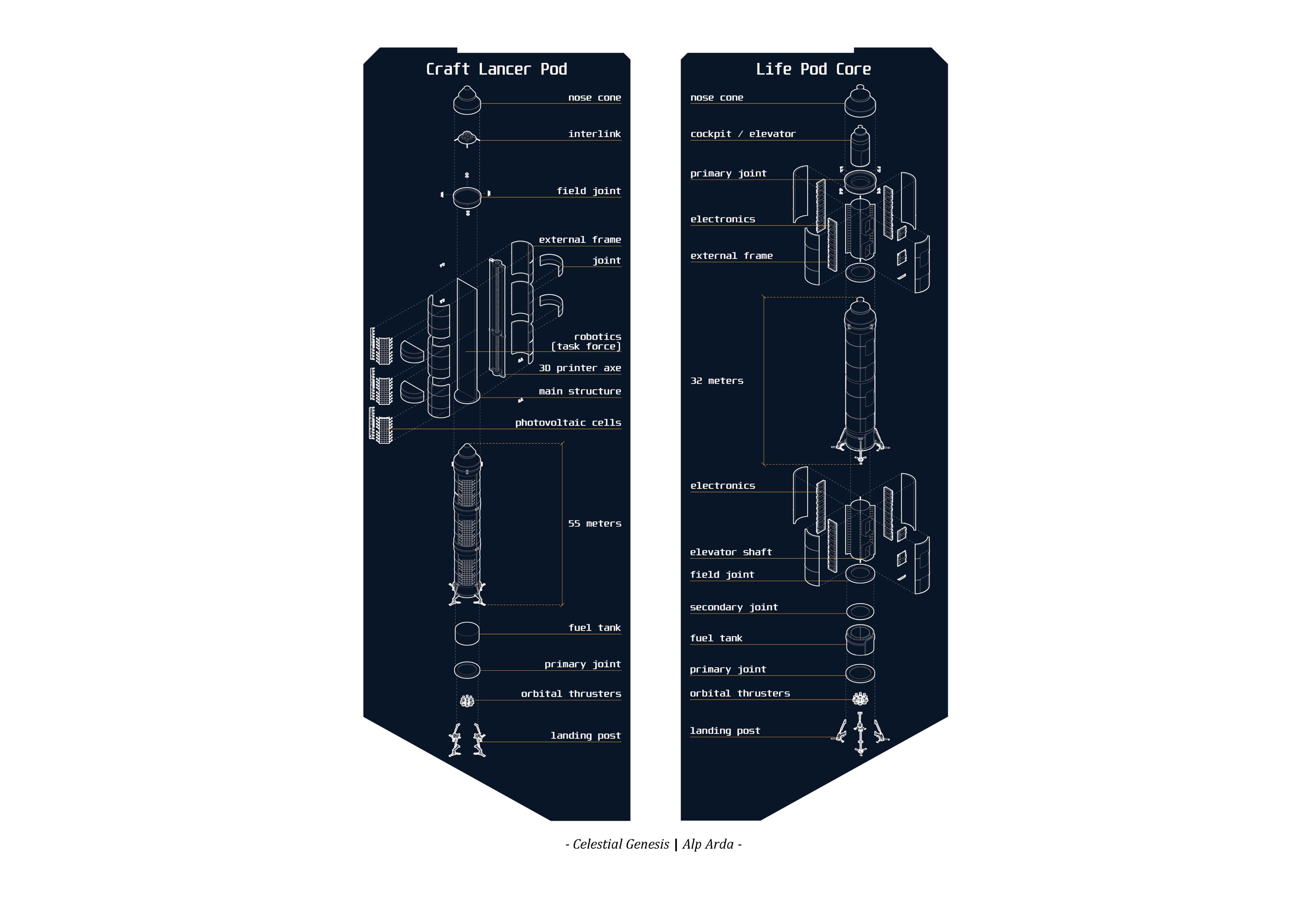
VZ- Where does your interest in design come from?
AA- My interest in design began with a fascination for how things are built and transformed. This curiosity was nurtured through academic studies and a love for video games and science fiction, which inspired me to create innovative and functional solutions. Combining personal passion with academic knowledge drives my enthusiasm for design.
VZ- What design fundamentals do you believe in?
AA- Functionality, sustainability, and innovation, driven by thorough research, are key design fundamentals. A design should efficiently meet practical needs, minimize environmental impact, and leverage creativity and technology, backed by research, to solve problems in new and effective ways.
VZ- What were your references/ inspiration?
AA- References and inspiration came from a blend of sources. The video game "Starfield" by Bethesda provided a creative starting point, while extensive reading of books, articles, and watching films about space and extraterrestrial life offered valuable insights. Additionally, research on past and current Mars missions, particularly the work of the Curiosity rover, played a crucial role. The integration of advanced technology and 3D printing innovations also significantly influenced the design process.
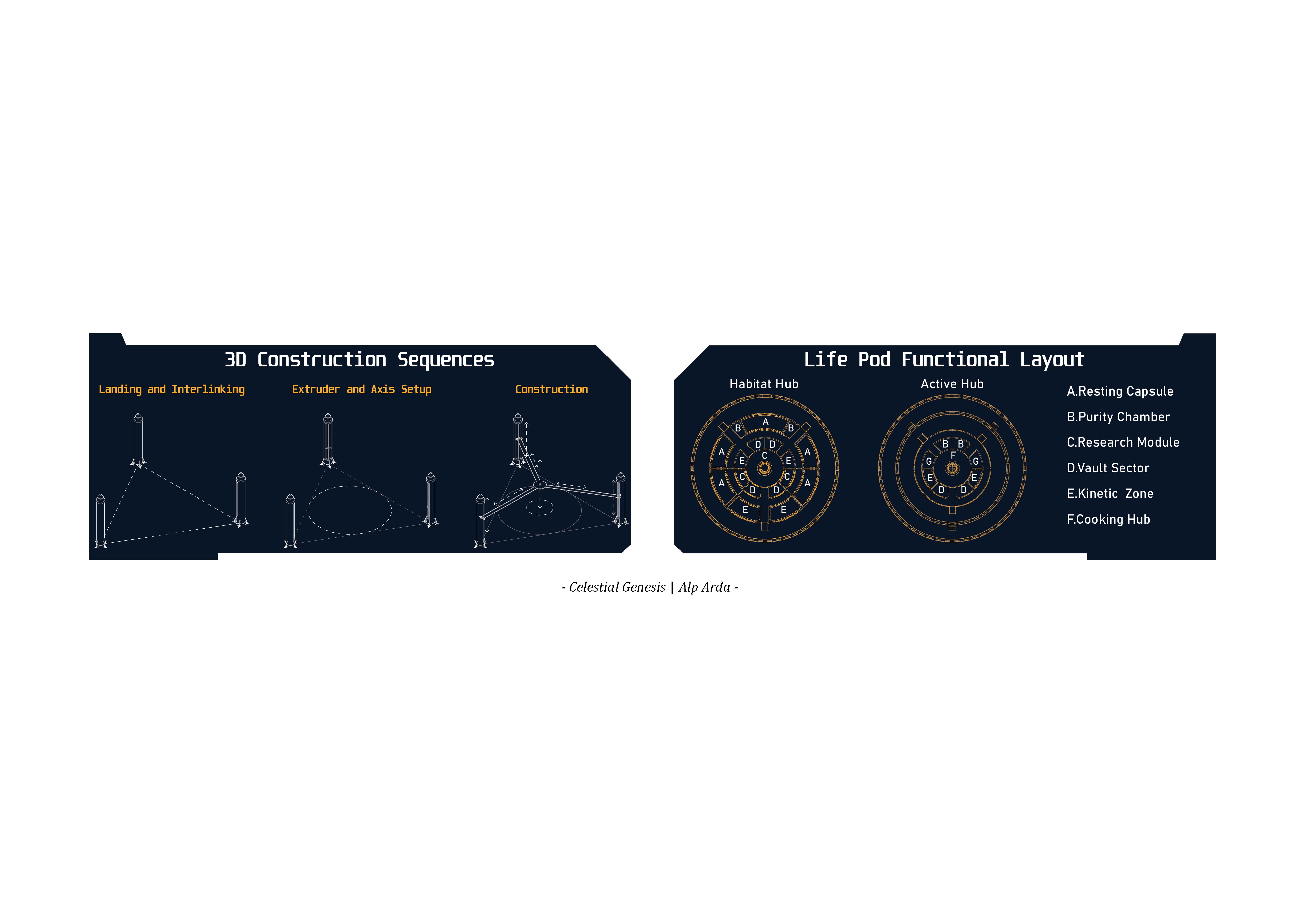
VZ- Which aspects of a design do you focus more during designing?
AA- Each project should represent a unique story. Ensuring that the design tells this story is essential. Functionality and sustainability are prioritized to meet practical needs and minimize environmental impact. Innovation and advanced technology are incorporated to address challenges creatively. This storytelling approach helps the reader, client, or jury perceive and connect with the project's unique narrative.
VZ- What according to you is the key to making your design a success?
AA- It may not be entirely appropriate for me to determine the key to my design's success, as success is subjective. However, what distinguishes my design approach is my unique drawing style and storytelling techniques. Instead of adhering to the standard render-plan-text format, I treat each sheet or workspace as a single, cohesive drawing. For me, a presentation board or workspace features one integrated drawing rather than multiple separate sketches or visuals. When this sense of unity and single-piece logic is applied to a plan, it results in a concept where the space is homogeneously and seamlessly interconnected, creating a consistent and fluid spatial experience.
VZ- Which tools do you use during design? What is inside your toolbox? Such as software, application, hardware, books, sources of inspiration etc.?
AA- My design toolbox is diverse and comprehensive, incorporating a range of software, hardware, and sources of inspiration. I primarily work with Rhino and Illustrator for their versatility and precision in creating detailed designs. In addition to these key software tools, my process is enriched by extensive research and a love for video games. As a gamer, I draw significant inspiration from video games like "Starfield" by Bethesda, which helps fuel my imagination and creativity when designing futuristic spaces. I also find inspiration in the works of filmmaker Christopher Nolan, whose films often explore complex themes and innovative visuals that resonate with my design approach.
Upcoming Deadlines
Tiny House 2025
Architecture Competition
Early Bird Deadline - 23 Jan 2026
Standard Registration Deadline - 27 Feb 2026
Submission - 12 Mar 2026


